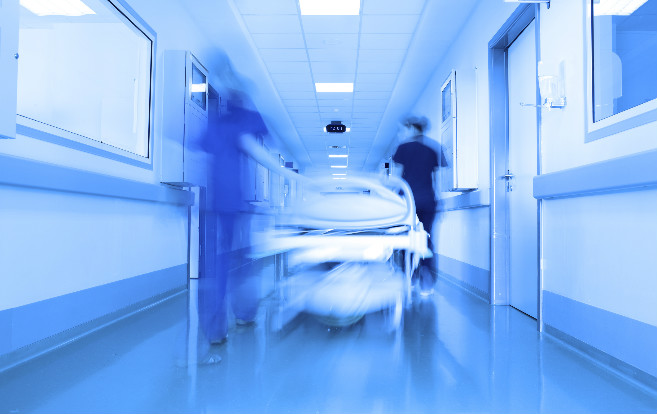Orlando Trauma Team Pulls Together to Save Dozens of Lives

ER charge nurse tells how teamwork and preparation helped ORMC clinicians treat 44 trauma patients from the Pulse nightclub shooting
By Debra Wood, RN, contributor
The night shift on Saturday, June 11, 2016, began like many others for emergency room nurses at Orlando Regional Medical Center (ORMC) in Florida: a steady stream of patients, a few critically ill. But shortly after 2 a.m., when a gunman started firing at revelers at the Pulse nightclub, a few blocks from the Level One Trauma Center, it became a night the nurses and other clinicians will never forget.
“We deal with trauma every day, and death, but this was on a scale we never imagined we would have to see and are struggling a little bit,” said emergency room nurse Sarah Duran, RN, BSN, who was in charge that night.
A nurse returning from a meal break gave Duran the first clue their shift was about to change, saying he thought he had heard gunshots. Stepping outside into the EMS bay, she saw police cars streaming past the hospital.
“‘Get ready,’ I told the trauma nurses and the senior attending,” Duran said. “I don’t know yet, but something might be coming our way.”
Then an Orlando police officer called to tell them multiple patients with gunshot wounds were en route, many of them in the back of police pickup trucks.
“They kept showing up and showing up,” Duran said. “We had no idea the extent of the injuries.”
After the first couple of patients arrived, nursing supervisors came down to help and directed nurses on the floors to come down and get some of the prior patients who had been waiting for inpatient beds.
Initially, the team began taking patients to the five-bay trauma room, but that filled up in a matter of seconds with wounded young people.
“There were so many critical patients coming that I had to have a new system for triaging patients,” Duran said. “Not everyone could go into a trauma bay. I had to decide who needed to see a doctor right now and go into a trauma bay, who could wait and who could leave once seen by a doctor to make room for another patient to come in.”
Additional operating rooms opened up and extra staff arrived.
“Everyone took more than their normal workload to help these patients,” Duran said.
After the 10th patient arrived, she called administration for back up. Nurses came down from the intensive care units. Nurses and paramedics from the pediatric emergency department at Arnold Palmer Hospital for Children, another Orlando Health facility across the street from the trauma center, arrived, as did off-duty nurses.
“I remember looking out and seeing all of the organized chaos, and I was proud to see everyone working together, getting things done efficiently and fast,” Duran said.
ORMC frequently drills for mass casualty events. Duran said she thought that helped with the response, because it provided a good foundation. She was able to think back to what was learned during the drills and trainings and drew on that information.
Through it all, Duran admits she felt a little scared, but she knew she had to stay focused on consoling the crying victims and treating their injuries.
“All of the staff did a good job of hiding their emotions for the moment, so we could provide the best care to the patients,” Duran said.
After all of the victims were stabilized or moved out of the emergency department and additional nurses could assume their care, assistant nurse managers pulled everyone into a meeting to discuss what happened and then let the night shift go home early. Additional formal and informal debriefings occurred.
In all, ORMC treated 44 of the Pulse massacre victims. Nine died; a few were not alive when they were brought to the emergency department. Even so, the heroic team attempted to resuscitate some, Duran said.
The event has been proclaimed the worst mass casualty shooting in U.S. history.
As of June 16, 2016, ORMC had discharged 12 victims; 23 remain in the hospital: six in critical condition and three in guarded condition, according to an ORMC media update. The rest are stable. Surgeons have performed 50 surgeries on these victims and more were scheduled.
“I am so proud of the teamwork and everyone who came in to help,” Duran concluded. “This has brought us all together … and bonded us for life.”
[The staff at TravelNursing.com would like to thank all of the first responders and the dedicated health care professionals at Orlando Regional Medical Center and other facilities who did such incredible work to save lives and help the victims of this tragedy.]
© 2016. AMN Healthcare, Inc. All Rights Reserved.